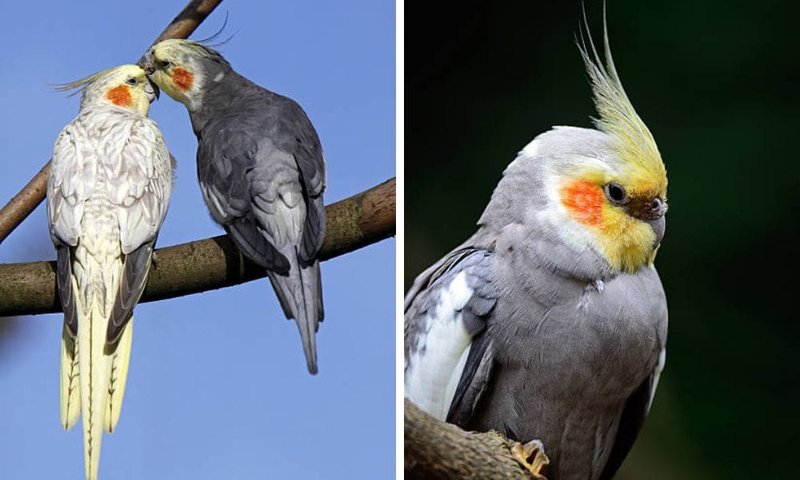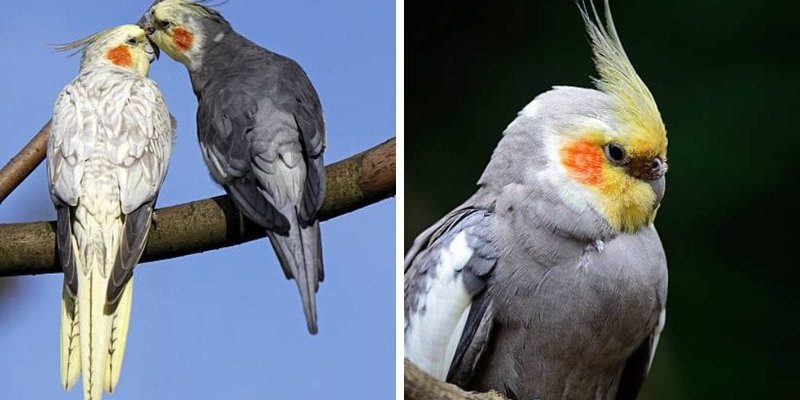
The world of a cockatiel is fascinating. They’re not just pretty faces; they’re equipped with instincts and behaviors that help them thrive. From social interactions with their human companions to their ability to modify their diets, these birds show resilience and creativity. Let’s dive into the various ways cockatiels adapt to their environments.
Understanding Their Natural Habitat
Cockatiels are native to Australia, where they typically inhabit open woodlands and grasslands. In these environments, they’re constantly on the move, searching for food and avoiding predators. You can think of their wild habitat like a buffet table filled with different types of seeds, fruits, and nuts. This natural setting has taught cockatiels how to find food in challenging circumstances, which they can adapt to even in captivity.
In captivity, these birds have to learn how to navigate a new world. They rely on their keen senses to understand their new environment. The sounds, sights, and even smells differ from what they would normally encounter in the wild. A cockatiel might initially be wary of new things, but over time, they learn what to trust, often mimicking the routines of their human caretakers.
Social Adaptation: Bonding with Humans
Cockatiels are known for their friendly and social nature. Just like you might enjoy spending time with friends and family, cockatiels thrive on interaction. When they feel safe and loved in their environment, they become more outgoing and playful. Honestly, have you ever seen how excited they get when someone walks into the room? They can be real little entertainers!
You might be surprised to know that cockatiels can form strong bonds with their human companions. They use vocalizations, body language, and even touch to communicate feelings and needs. Over time, they learn to pick up on their owner’s habits, responding with their own quirks. This adaptability to human emotions and behaviors is part of what makes them such great pets.
Feeding Habits: A Flexible Palate
When you think about how cockatiels adapt to their diets, it’s pretty impressive. In the wild, they have a varied menu that includes seeds, fruits, and even the occasional flower. In your home, you might provide a mix of commercial pellets, seeds, and fresh veggies. Cockatiels are quick to learn what food is available, often showing preferences based on what they taste.
The interesting thing is that their feeding behavior can change based on their environment. If they notice their cage mates are enjoying a new type of food, they might be tempted to try it too. This kind of adaptability helps them maintain a balanced diet, as long as you offer a variety of healthy options. Plus, it’s essential to introduce new foods gradually, as sudden changes can lead to fussiness or even digestive issues.
Environmental Changes: Overcoming Challenges
Life isn’t always smooth sailing, and cockatiels can face unexpected changes in their environment, like a new home or a different cage setup. Here’s the thing: they have a remarkable ability to adjust. When faced with these changes, cockatiels tend to rely on their instincts and social connections, often seeking comfort from their humans.
For instance, if you rearrange your furniture or bring in new decorations, they might feel a bit anxious at first. However, if you spend time near their cage, talking to them or encouraging them to explore, they’ll start to feel more at ease. It’s like when you move to a new neighborhood; it can feel strange at first, but with time and a little reassurance, it becomes familiar.
Behavioral Changes: Learning Through Experience
Cockatiels are not just reactive; they’re also proactive learners. When they encounter new toys or activities, they engage in exploration, often brushing against their limits to see what’s safe and fun. This learning process is similar to when you try out a new hobby and slowly get better at it through practice.
If a cockatiel discovers that a particular toy makes sound or can be manipulated in a fun way, they’ll likely return to it. Through reinforcement (like praise or treats), they learn that certain behaviors lead to positive outcomes. This kind of problem-solving ability is crucial for their emotional and physical well-being, helping them thrive in both natural and domestic settings.
Creating a Safe Space for Adaptation
Whether in the wild or in your living room, having a safe space is critical for a cockatiel’s adaptability. In their natural habitat, they look for places to perch where they can spot predators. In your home, you can replicate this by providing safe spots like perches at varying heights, hiding places, and stimulating toys.
Make sure their cage is spacious enough for movement and exploration, and regularly change their toys to keep things interesting. When your cockatiel feels safe in their environment, they’ll be more inclined to explore and adapt. It’s like how you feel more comfortable in a room that’s decorated to your taste versus one that’s bare and unwelcoming.
Adapting to an environment is as crucial for cockatiels as it is for us. These charming birds showcase a wide range of behaviors that allow them to thrive in various settings, whether they’re in the wild or being pampered at home. By understanding their natural instincts and behaviors, we can provide better care and create an environment where they can flourish.
So, next time you hear your cockatiel chirping away or watch them exploring their territory, remember that they’re not just being cute; they’re making sense of their world. And who knows? You might just learn a thing or two about adaptability from your feathery friend!

